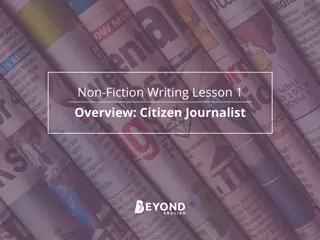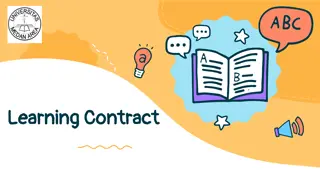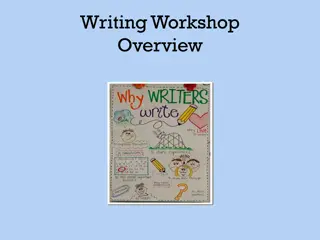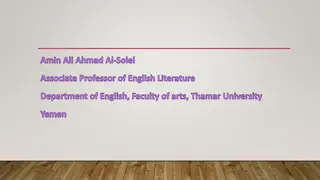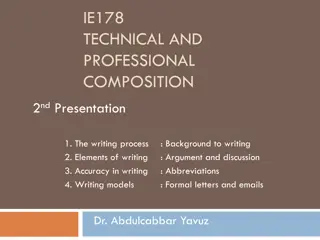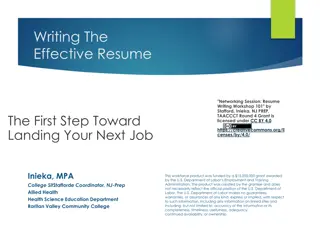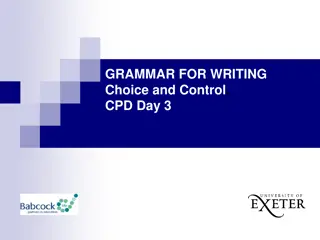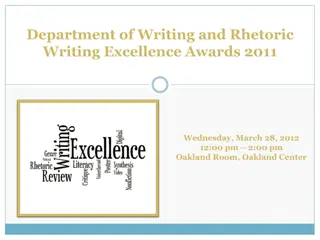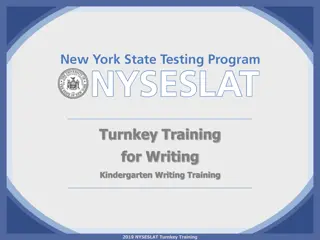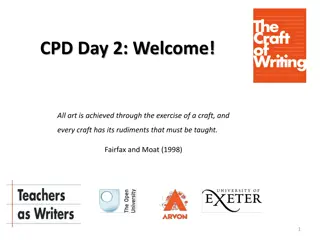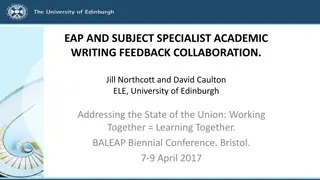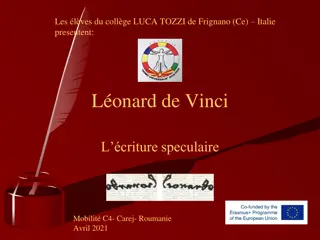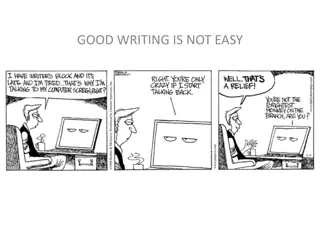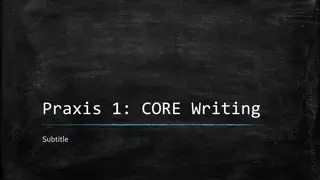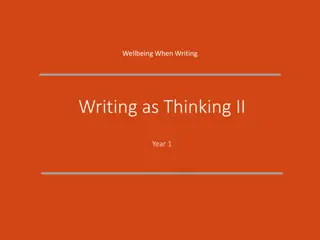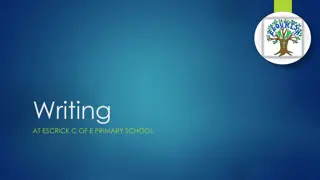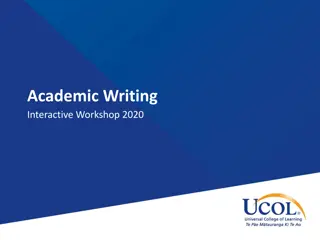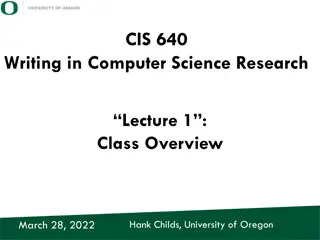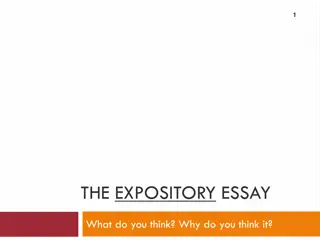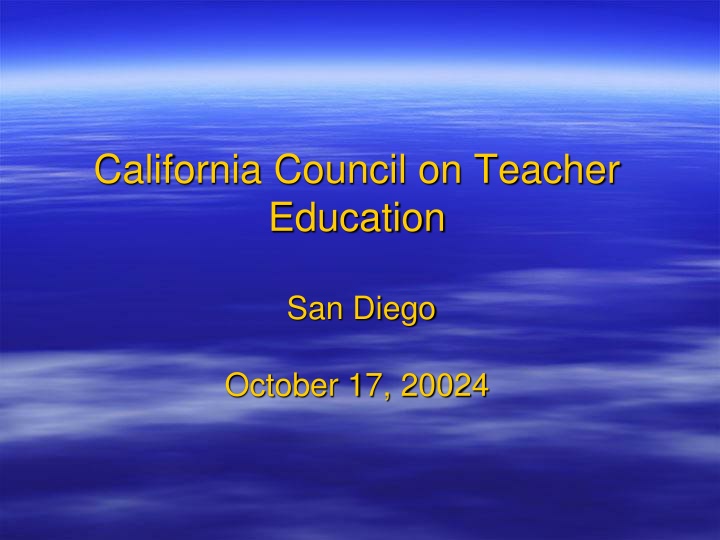
Understanding the Publication Process for Educators
Learn about the publication process for educators, maximizing success, connecting specializations to broader contexts, and collaborating to write effectively. Join experts in the field to enhance your scholarly activities.
Download Presentation

Please find below an Image/Link to download the presentation.
The content on the website is provided AS IS for your information and personal use only. It may not be sold, licensed, or shared on other websites without obtaining consent from the author. If you encounter any issues during the download, it is possible that the publisher has removed the file from their server.
You are allowed to download the files provided on this website for personal or commercial use, subject to the condition that they are used lawfully. All files are the property of their respective owners.
The content on the website is provided AS IS for your information and personal use only. It may not be sold, licensed, or shared on other websites without obtaining consent from the author.
E N D
Presentation Transcript
California Council on Teacher Education San Diego October 17, 20024
Writing for Publication: What Prospective Authors Need to Know Understanding The Process Maximizing Opportunities for Success
Introductions Who Are We and Why Are We Here? What are you Getting Smarter About? Teaching Fields/Courses Topics of Interest Current Research Professional Organizations
Thomas Nelson, Ph.D., Emeritus Benerd School of Education University of the Pacific Doctoral Program Director, Department of Curriculum and Instruction Past Editor (12 years) and Current Advisory Board Member, Teacher Education Quarterly Editorial Boards: Issues in Teacher Education Journal of Mentoring and Tutoring Journal of Curriculum and Pedagogy Eco-Justice Press
Manuscript reviewer for over 30 years/numerous scholarly publications and textbook publishers AERA reviewer AERA Doctoral Student Mentor Chaired, Co-Chaired several CCTE Conferences
Scholarly Activities Our professional responsibility to share our work with colleagues near and far Which means writing and publishing Comes with the academic territory we inhabit Who is your audience? GOOD NEWS: Journals need YOU!
Topic and Approach What are you getting smarter about? What are your areas of specialization? In what ways are you connecting your area of specialization to broader cultural social, political, environmental contexts? In what ways are your philosophical orientations represented in your teaching and scholarship? What has been studied and written about in your area of interest?
If you can talk and you can teach . . . You can write! Collaboration with fellow faculty AND students!
Frame Your Writing Based On What You Know AND What You Are Getting Smarter About What are the implications of your work in helping inform local school and educational contexts? In what ways does your work represent yourself as an educational change agent?
Types of Academic Articles Research Articles Book Reviews Trade/Professional Articles Interviews Translations Literature Reviews Theoretical Articles Arguments/Position Articles
Interconnectedness Connecting the local with the global Connecting the larger political, ideological, philosophical influences on local practice Situating work within Systems Looking for interconnections, interrelationships
Do Your Homework Keep on the look out for Call for Papers for themed publications Carefully review publications most relative to both your topic and methodology Make a list of those that most closely match Rank order your list based on acceptance rates and topic fit Understanding the audience Read back issues to get familiar with the journal (This is REALLY important) Refer to journal websites for specific guidelines for submission Open Source Online Submission Systems
Writing the Manuscript I Attention to proper format (APA, Chicago, MLA) Clarify acronyms Avoid jargon Problems with overwriting Try not to impress the editor with over-technical language Good organization is critical (Headings/Subheadings) Philosophical Orientation Theoretical Frameworks Analytical Frameworks
Writing the Manuscript II Research Study Introduction, Findings, Conclusions Relevant Literature References and Citations Building upon prior research Connections to larger issues Interconnectedness: Moving beyond the local Methodology clear and well referenced !! References (double check for accuracy) Tables and Graphs Appendices
Writing the Manuscript III Argument/Position/Discussion Paper What is the Problem/Issue Under Consideration? Multiple perspectives of the problem/issue among others Philosophical and/or Theoretical Perspective Positionality and/or Argument Implications/Opportunities/Possible Solutions
Writing the Manuscript IV Clarity of writing is essential Avoid long sentences Avoid paragraphs that run for more than a page Special attention to first page and last page Research Questions and Methodology Seek out peers/colleagues/students for critical review and feedback
Reasons for Rejection Too narrow, too broad Opening page and last page disconnected Off topic Not scholarly/Not cohesive No compelling argument Poorly structured/organized Theoretically/Methodologically flawed Grammar/sentence structure problems
Submission of Manuscript Protocol and Etiquette Follow submission guidelines to a TEE! Cover letter No author names ON or IN manuscript, including references (a common mistake) Be polite, respectful, courteous Be patient Refrain from calling on the phone Email communication with editors Remember: Editor s are not typically paid Process of building collegial networks
Cover Letter Use letterhead Address the editor by name Include the title of the manuscript Include a short description of the piece Describe the significance of the work Reasons why readers of the journal may be interested in this work Has not been published or submitted in/to any other journal/publication Full contact info for all authors
Receiving Reviews Read carefully blind reviews Taking criticism constructively Emotional responses not productive Accept, Revise/Resubmit, Reject Working with editors on revised draft Responding to request for revisions Arguing your case Remember: You know your study better than anyone else Dealing with rejection
Resubmission Timeline for resubmission Following resubmission guidelines Adhere to recommendations for revisions Separate doc detailing list of revisions made Maintaining the integrity of your study Awaiting word from the editor Dealing with good news
Acceptance Congratulations! What next? Copy editing galley/proofs Making final revisions Acknowledging the work of the Editor and reviewers and colleauges Awaiting publication Being patient Understanding the Publication Process
What next? What new inquiry-based questions have emerged? Supporting the journal Sharing the journal with colleagues and students Giving back. Becoming a reviewer New colleagues, new projects ahead Becoming active in new communities of scholars/Professional organizations Considering co-authoring with students and/or colleagues
Thank you Questions?

